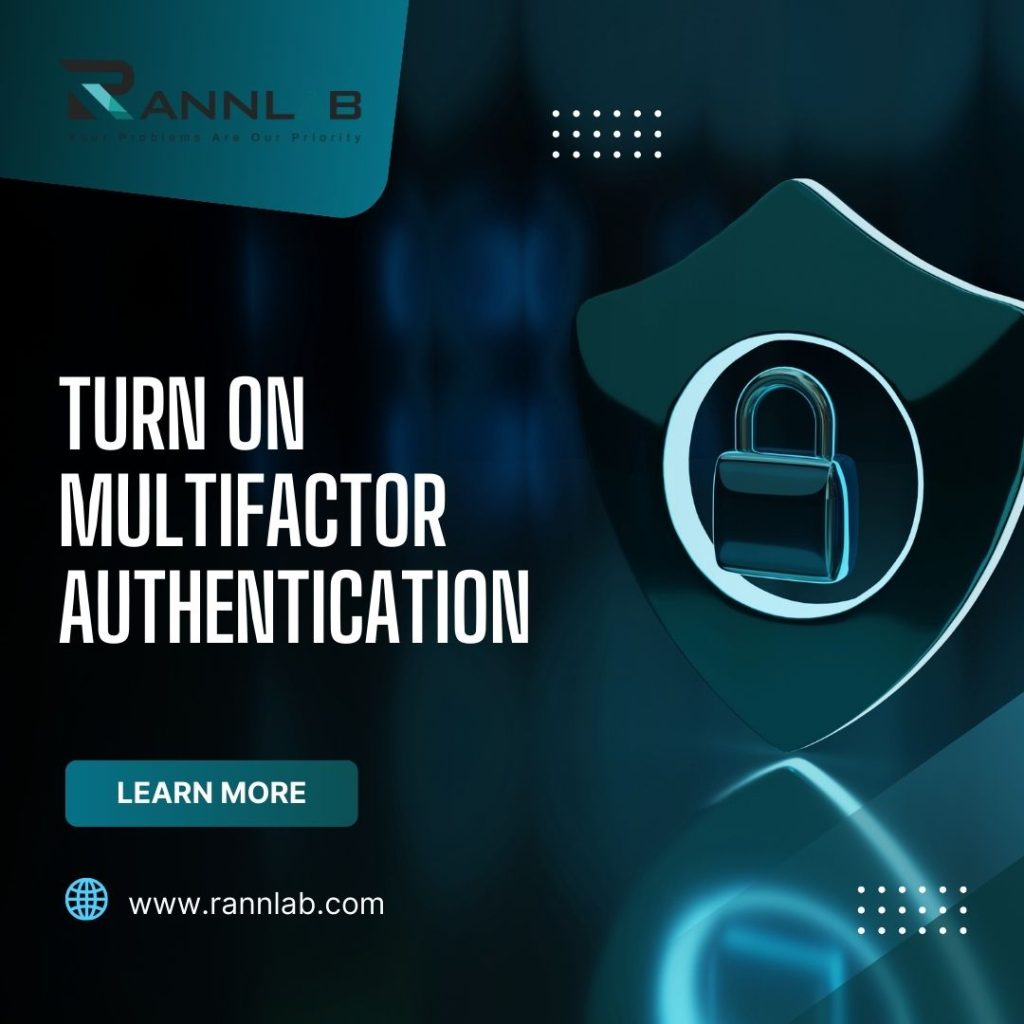
It goes by many names: Two Factor Authentication. Multifactor Authentication. Two Step Factor Authentication. MFA. 2FA. They all mean the same thing: opting-into an extra step when trusted websites and applications ask you to confirm you’re really who you say you are. Your bank, your social media network, your school, your workplace…. they want to make sure you’re the one accessing your information. So, industry is taking a step to double check. Instead of asking you for a password – which can be reused, more easily cracked, or stolen.
In our increasingly digitized world, the significance of cybersecurity has reached paramount levels. As we witness a surge in cybercrime incidents, individuals and organizations are compelled to bolster their defenses against these threats. One potent and proactive approach to safeguarding our digital lives is the adoption of multifactor authentication (MFA). This security practice acts as a powerful shield, safeguarding your sensitive data and digital identity from the clutches of cybercriminals.
Understanding Multifactor Authentication (MFA) Multifactor authentication, often referred to as two-factor authentication (2FA) or two-step verification, is a robust security mechanism designed to fortify digital access. Unlike relying solely on a password, MFA requires users to provide two or more distinct verification factors to access an account or system.
These factors span three categories:
Something You Know: This encompasses the traditional password or PIN, although passwords can be vulnerable due to breaches and phishing attacks.
Something You Have: In this category, users must possess a tangible device or token that’s unique to them. Examples include a smartphone, a hardware token, or an authentication app.
Something You Are: This pertains to biometric factors such as fingerprints, facial recognition, or retinal scans. These are difficult to replicate and provide an added layer of security.
What is Multifactor Authentication?
Multifactor Authentication is a security measure that requires users to provide two or more verification factors to gain access to an account. Unlike traditional password-only methods, MFA combines different types of credentials: something you know (a password), something you have (a smartphone or hardware token), and something you are (biometric verification). This multi-layered approach significantly enhances security by making it more challenging for attackers to gain unauthorized access.
Why Implement MFA?
- Enhanced Security: MFA adds a critical layer of protection beyond passwords. Even if a password is compromised, an additional factor (such as a one-time code sent to a mobile device) is required to complete the login process.
- Reduced Risk of Data Breaches: By requiring multiple forms of verification, MFA reduces the risk of data breaches and unauthorized access, protecting sensitive information from cyber threats.
- Compliance: Many regulatory standards and industry best practices now mandate the use of MFA for protecting personal and financial data. Implementing MFA helps ensure compliance with these requirements.
How to Turn on MFA
- Choose Your MFA Method: Decide on the authentication methods that best suit your needs, such as SMS codes, authentication apps, or biometric verification.
- Access Security Settings: Go to the security settings of your account or system where you want to enable MFA.
- Follow Setup Instructions: Follow the on-screen instructions to configure MFA. This typically involves verifying your phone number or linking an authentication app.
- Test and Confirm: After setup, test MFA to ensure it works correctly. Confirm that all factors are functioning and that you can access your account as intended.
At RannLab Technologies, we are committed to helping you implement and manage MFA to strengthen your cybersecurity posture. Our team provides comprehensive support to ensure a smooth and effective MFA integration, enhancing the security of your digital environments and safeguarding your valuable information.
4o mini

